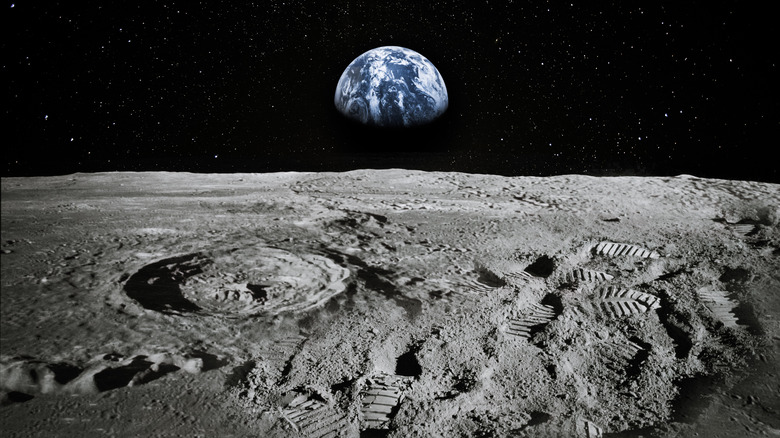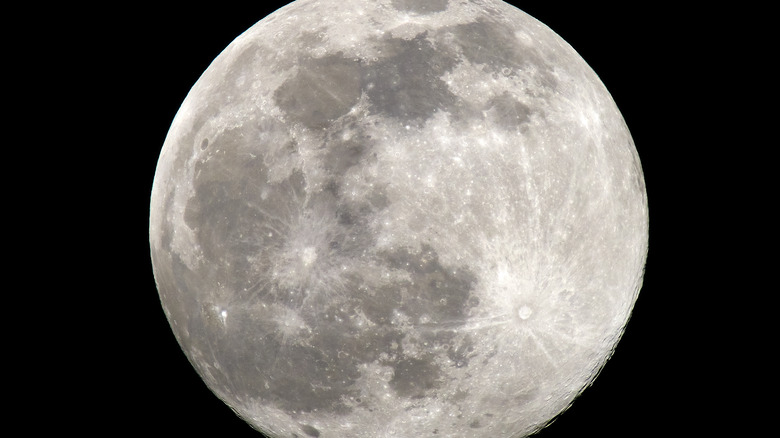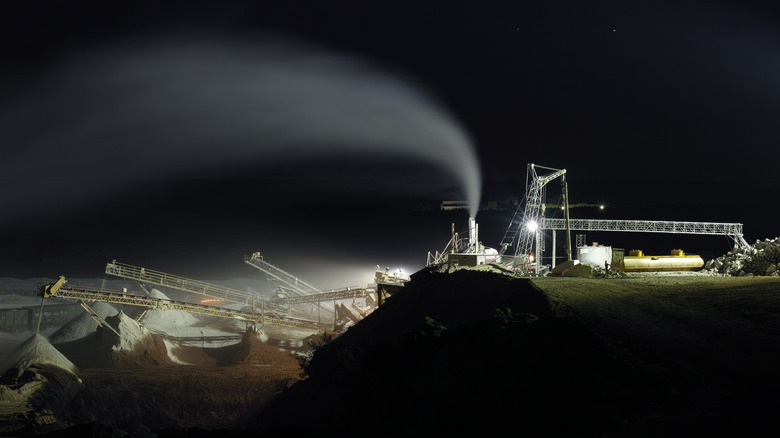What's Actually Under The Moon's Surface, According To NASA
What's under the moon's surface? Well, you can go ahead and put your cheese grater away because it's not swiss, cheddar or Camembert.
Like Earth, the Moon also has a crust, mantle, and core. However, the its center is made of iron and nickel, making it our solar system's second densest moon behind Io, one of the 79 moons circling Jupiter.
The solid inner core of our Moon is 480 kilometers in diameter, and the outer core of molten liquid iron pushes the total diameter to 660 kilometers (via NASA). It is small compared to most other celestial bodies that typically have cores that are half their overall diameter, like Earth's. According to Space, the lithosphere comprises most of the Moon's interior at roughly 620 miles thick. The mantle is about 839 miles wide, while the crust is only 31 miles. Oddly, the Moon's side facing towards Earth has a thinner crust than the one facing away, and according to NASA, scientists aren't sure why.
At one time, the Moon was besieged by volcanic activity. The resulting lava flows helped to form the vast plains easily viewed through a telescope. Once the magma cooled, it solidified, which in turn likely caused the interior layers to split apart (via Space). These different layers of diverse materials classify the Moon as a "differentiated world." Over time the heaviest elements made their way down to the Moon's center while the lighter ones stayed on or near the surface.
The light and darkness war
The jury is still out on exactly how the Moon was formed. The prevailing theory is that a "Mars-sized protoplanet" crashed into an adolescent Earth and the resulting debris collapsed to form the Moon. Chemical analysis shows its composition is relatively close to Earth. However, scientists discovered that rocks on the bright plains (the lunar highlands) actually contain less metallic minerals than those found on the darker plains. That only makes sense if the Earth had already formed its core, mantle, and crust before the collision, leaving the Moon bereft of metal. However, the rocks found in the Moon's darker plains contain more metal than those found on Earth (via NASA).
In 2011, NASA launched the Miniature Radio-Frequency (Mini-RF) instrument on board the Lunar Reconnaissance Orbiter, which is still circling the Moon today. Its original mission was to find ice on the surface, but eleven years later... it found something else.
While measuring an electrical property in the lunar soil inside craters — called the dielectric constant — the Mini-RF discovered this property increased in craters one to three miles wide but remained the same for craters that were three to 12 miles wide. Essam Heggy, co-investigator of the mission, and other scientists thought it was a correlation that had no reason to exist (via NASA).
Mining the Moon is only a matter of time
After comparing data obtained from the Mini-RF with maps of metal oxides made from the LRO Wide-Angle Camera, they confirmed that larger craters with higher "dielectric properties are directly linked to the concentration of these metal minerals" (via Johns Hopkins).
W hile the first few hundred meters below the Moon's silvery surface might be devoid of any precious metals, the deeper you go ... the richer the treasure. These discoveries back up NASA's Gravity Recovery and Interior Laboratory (GRAIL) mission, which found a mass of metal "five times larger than the Big Island of Hawaii" under the South Pole-Aitken Basin — all of which sounds like the basis for any good space pirate story.
Noah Petro, the LRO's project scientist at NASA's Goddard Space Flight Center, says the data from the Mini-RF is invaluable. It not only continues to provide data on what may be hiding on and under the Moon's surface but also shed light on how it was formed and what its true celestial bond to Earth might be (via Johns Hopkins).
The race to get paying customers into space is on, but the race to obtain mining dibs on the Moon might be the bigger prize.


